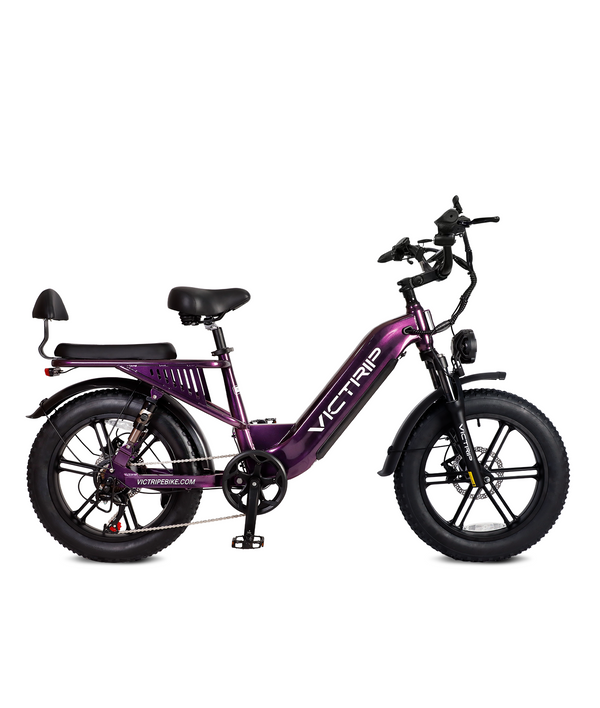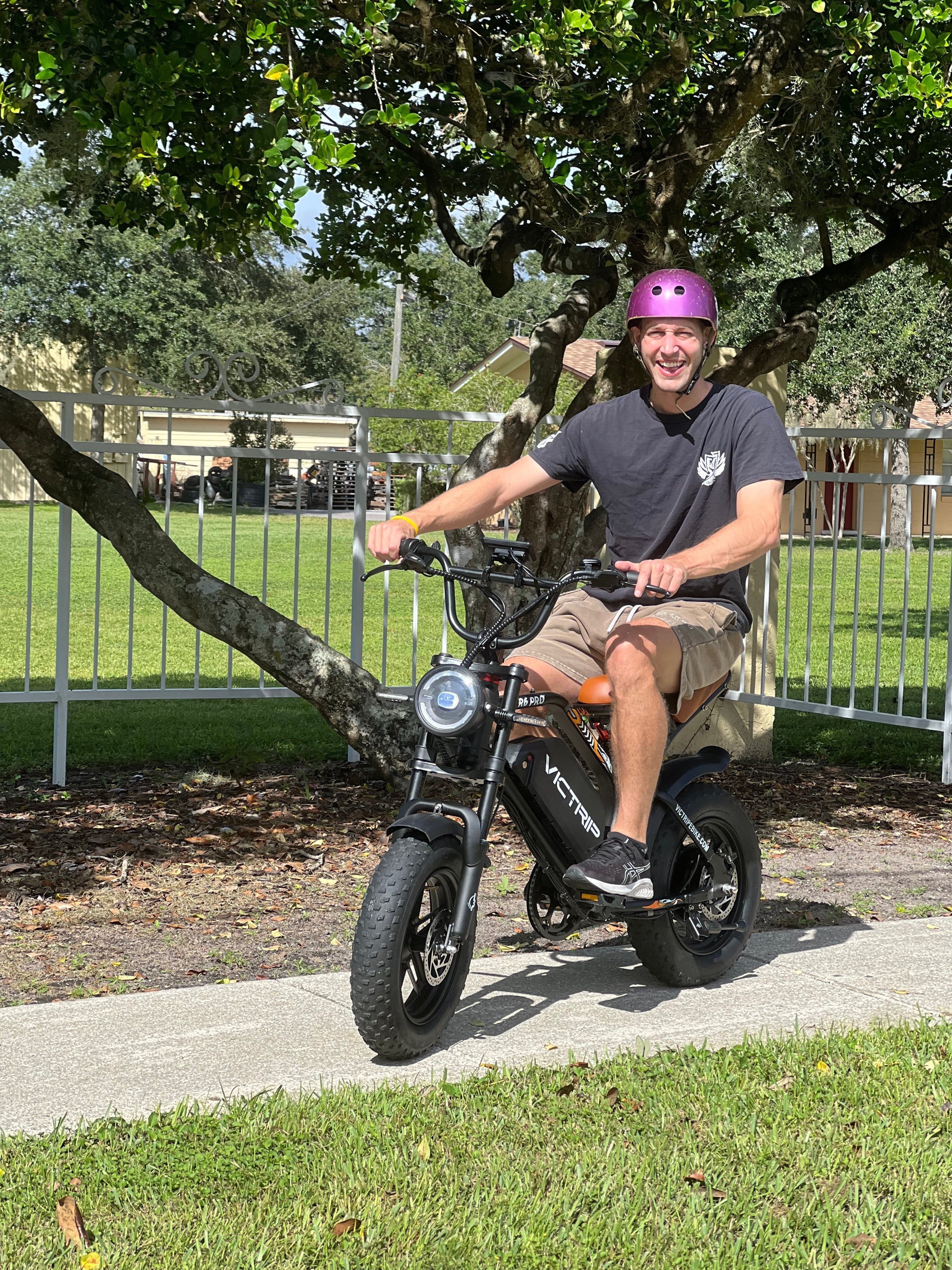When you ask “Why Battery Capacity Matters More Than Motor Power?” the short answer is: because battery capacity (measured in watt-hours, Wh) determines how long the system can deliver energy, and therefore how far and how long you can use the motor. Motor power (watts) affects how fast or how strongly the vehicle can accelerate or climb, but it does not on its own give you range. In plain terms: power is how fast you can use energy; capacity is how much energy you have to use. This difference is the root of most real-world decisions for e-bikes, scooters, motorcycles, and light EVs.
Core concepts: what battery capacity and motor power actually mean
Battery capacity: Wh and Ah explained
Battery capacity tells you how much energy is stored. The clearest unit is watt-hours (Wh) — that's volts × amp-hours. So a 36 V, 10 Ah pack ≈ 360 Wh of stored energy. Watt-hours are the direct measure of how much "fuel" you have. If you use 36 W continuously, 360 Wh would last about 10 hours; if you use 360 W, it lasts about 1 hour. That arithmetic is simple but crucial.
People sometimes focus on amp-hours (Ah) or volts separately, but they must be combined to get real energy. Manufacturers who only quote Ah without voltage are being vague — it's the Wh that tells you usable energy.

Motor power: watts, torque, and peak vs continuous
Motor power (watts) is how fast the motor can convert electrical energy into mechanical work. Higher wattage usually means better acceleration and the ability to climb steep hills while carrying a heavy load. But motors have peak and continuous ratings; a controller or battery may limit continuous output. High peak power is useful for short bursts; continuous high power drains energy fast and heats components. So power ≠ endurance.
Why capacity usually governs range
Typical energy use per mile / km
A practical rule of thumb for many e-bikes is 10–20 Wh per mile (6–12 Wh/km) depending on conditions. That means a 500 Wh pack gives roughly 25–50 miles under typical mixed riding. Those numbers are only rules of thumb — but they show the clear link: range scales with battery energy, not motor wattage.
How riding style, terrain, and load change consumption
If you ride fast, use maximum assist, carry heavy cargo, or climb hills, your Wh/mile increases. Conversely, steady pedaling and flat roads lower consumption. The motor rating only tells you the potential power — how much energy you might draw — but the battery capacity is the limit on how long you can keep drawing it. In other words, a big motor can burn through a small battery very quickly.
This is precisely where high-efficiency models like the VICTRIP TITAN S Long Range Ebike shine. It’s engineered with a balanced motor-to-battery ratio that optimizes Wh consumption for real-world riding. Instead of oversizing the motor, the TITAN S emphasizes energy management — meaning longer rides, cooler operation, and steadier power delivery even on steep terrain.
Motor power matters — but in different ways
Acceleration, hill climbs, and short bursts
If you want sprinting acceleration, to climb steep gradients comfortably, or to haul cargo, motor power is crucial. A 750 W motor will out-accelerate a 250 W motor when both get full battery support. But if your rides are long and steady, that extra power might be used rarely — and when used, it rapidly shortens range. So power is about capability, capacity is about endurance.
Heat, controller limits, and continuous draw
A motor’s continuous power draw is limited by the controller and battery discharge capability. Drawing high current for long periods causes heat and may force the system to reduce power to protect itself. That’s why “peak” wattage advertised for motors can be misleading for long climbs or heavy loads — sustained performance is bounded by the whole drive system, not just the motor sticker.
Trade-offs: weight, cost, and battery tech
Weight vs range vs handling
A larger battery gives more Wh and thus more range — but at a cost: weight. Heavy batteries make handling worse, increase rolling resistance slightly, and change vehicle dynamics. Designers must balance the desire for long range against weight and packaging. For urban commuters, a medium-sized battery with frequent charging may be the best balance; for long-distance users or cargo carriers, a larger pack is better despite weight.
For instance, the VICTRIP Mimas Step thru Ebike integrates its high-capacity battery seamlessly into a lightweight frame, offering the endurance of a large pack without compromising maneuverability. Riders enjoy long-distance capability with a ride that still feels nimble and controlled — a perfect illustration of how intelligent design maximizes battery benefit without overburdening the system.
TOP PICK

VICTRIP® Mimas Electric Bicycles With Torque Sensors
$1,399.00
Cost per Wh and lifecycle
Batteries are one of the most expensive components when priced per Wh. A bigger battery often raises the vehicle price more than a more powerful motor would. Also consider cycle life — larger packs that are regularly discharged less deeply can last longer in calendar and cycle life. That economic and lifecycle perspective is why many riders choose bigger capacity before picking a higher-watt motor.
Choosing the right balance: practical buying advice
For commuters
If you ride 10–20 miles a day in an urban setting and can charge at work or home, a moderate battery (300–500 Wh) plus a 250–500 W motor is often ideal. It’s light, affordable, and gives daytime usability without carrying too much weight.
For cargo and riders who climb
If you regularly carry loads or climb steep hills, prioritize higher capacity (500–1000 Wh) and a motor with higher continuous torque. You’ll want both: enough energy to cover distance with heavy draws and enough sustained motor power to climb without overheating.
For performance riders
If you want sprinting or sport riding, pick a high-power motor but match it to a larger battery if you want reasonable range. Otherwise you’ll have great bursts and tiny overall time on boost.

Real-world examples and simple calculations
Let’s do simple math — no fluff.
-
Example A (commuter): 36 V × 10 Ah = 360 Wh. If your riding uses ~15 Wh/mile, range ≈ 360 / 15 = 24 miles.
-
Example B (longer range): 48 V × 20 Ah = 960 Wh. At 15 Wh/mile, range ≈ 960 / 15 = 64 miles.
-
Example C (heavy use): 500 Wh pack, aggressive assist, hills → consumption 25 Wh/mile → range ≈ 20 miles.
These show why capacity maps more directly to usable range than motor wattage does. If you add a 1000 W motor to Example A you’ll have the power to blast up hills, but if you use that power often, the 360 Wh pack will be exhausted fast.
Safety, maintenance, and future trends
Bigger batteries have brought discussions about safety (fires, thermal runaway), regulation, and swapping infrastructure. Battery management systems (BMS), proper charging, and regulated manufacturing mitigate risks — but it's important to match battery size and charging habits to safe practices. Meanwhile, industry trends like standardized swappable packs, higher energy density chemistries, and improved BMS make higher capacity less painful in terms of weight and cost over time.
Conclusion — what to take away
If you want dependable range and everyday usefulness, prioritize battery capacity (Wh) first, then match motor power to your use case. Motor wattage buys acceleration and climbing ability; battery capacity buys distance and endurance. Put simply: motor power decides what you can do; battery capacity decides how long you can do it. Make choices based on realistic daily distances, terrain, and payload rather than marketing numbers alone. Use the Wh calculations above to estimate range for your riding habits, and remember to factor in weight, cost, and safety.
FAQs
Does a bigger motor give me more range?
No — a bigger motor can let you use more power (thus increasing energy draw), but it doesn’t store additional energy. Without a larger battery, higher motor usage usually reduces range.
What is the best unit to compare batteries? Wh or Ah?
Use watt-hours (Wh). Amp-hours (Ah) alone are incomplete because they omit voltage. Multiply Ah × V to get Wh.
How many Wh per mile should I expect?
Many riders see roughly 10–20 Wh per mile in typical urban or mixed conditions. Terrain, rider weight, and assist level shift that number.
Can a small battery support a big motor safely?
Technically yes for short bursts, but sustained high draw can overheat the battery, lower efficiency, or trigger protective cutouts. It's not ideal for long climbs or hauling.
Are bigger batteries more dangerous?
Larger cells store more energy, so failures can be more severe. Proper BMS, certified packs, good chargers, and safe charging habits greatly reduce risk. Regulation and standards are improving safety.




Share:
How Teens Can Personalize Their Ebikes?
Buying Your First electric trike? 8 Mistakes to Avoid